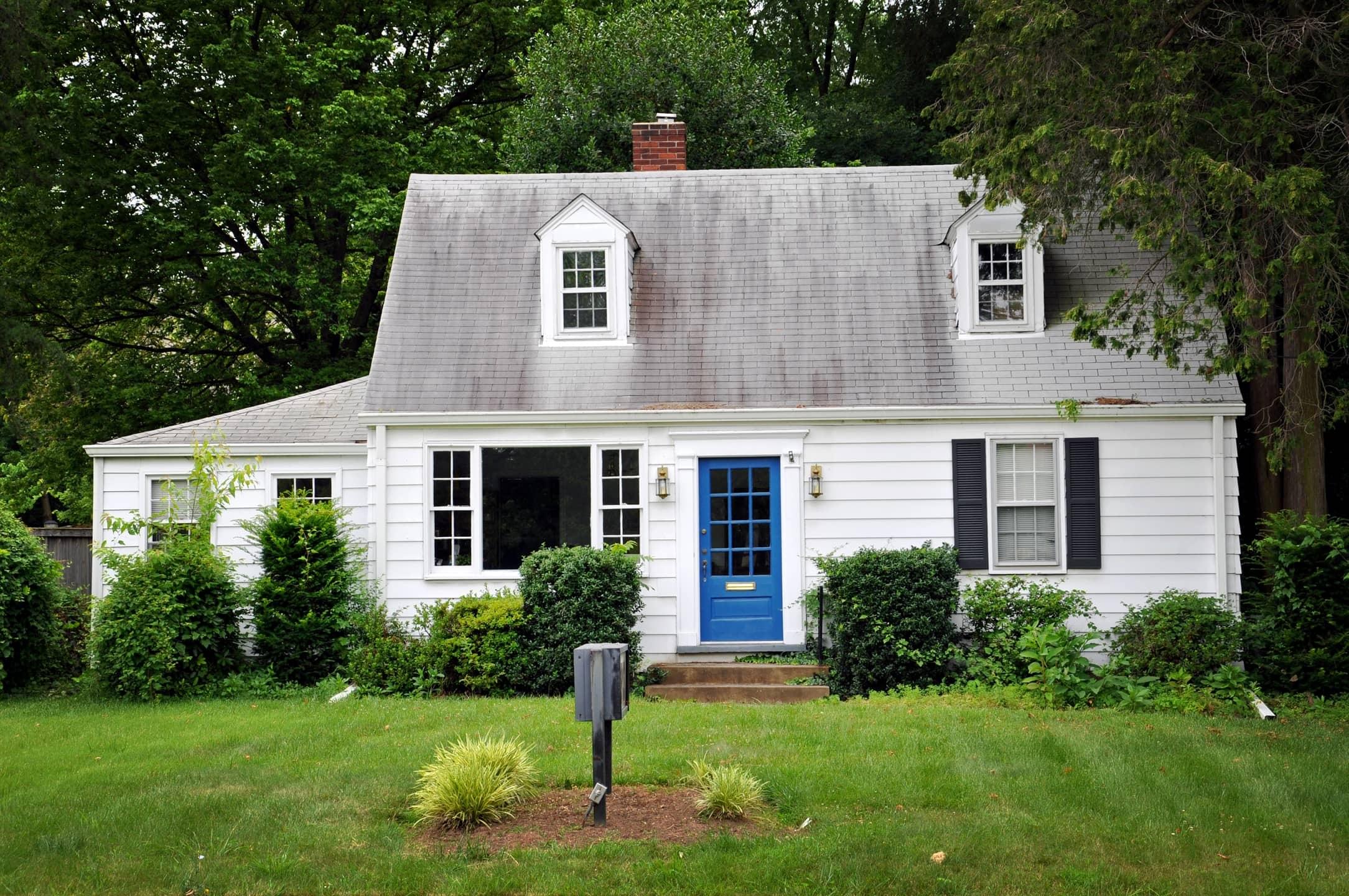Buying and selling a house as is

If you’ve ever browsed a Craigslist ad, say, for used furniture or vintage stereo equipment, you may have come across the seemingly neutral yet highly instructive phrase “as is.” Depending on your level of savvy and experience, you were either flummoxed by these words or knew right away that the seller was describing the potential sale in ambiguous yet unyielding terms.
Suffice it to say that “as is,” has less to do with the condition of the item and more to do with the terms of the sale itself. It’s a way for the seller to put down a marker and warn any potential buyer that they will not be open to any requests to improve upon the condition of the item in order to make the sale.
To put it more bluntly, “as is” is essentially another way of saying “take it or leave it.”
When looking to purchase a house, homebuyers may also encounter this terminology. It should come as no surprise that the underlying message is the same: The house will be sold in its current state.
In this article, we’ll take a closer look at the practice of buying and selling a house “as is.” We’ll weigh the pros and cons from both sides of the transaction and see how savvy homebuyers can seize advantage of “as is” sales and pounce on a below-market property and a good mortgage rate to acquire a home that suits their needs.
What ‘as is’ means in the housing market
When sellers list their property “as is” they’re making it available to the marketplace in its current state and are not prepared to address any issues that exist or repairs that may be necessary.
The as-is stipulation, while not uncommon, is not how most people sell their house. Typically, any issues with the house and/or property (often discovered as the result of a home inspection or appraisal) are brought to the negotiating table where the buyer makes a request to have them fixed prior to closing. In these situations, the purchase of the house is usually contingent upon the seller making these repairs. If the request is reasonable, the seller obliges the buyer, addresses said issue(s) and the closing process begins.
As-is sales are usually conducted without such contingencies. Potential buyers are told that the property is for sale in its current condition only. If the buyer detects things that need fixing through a home inspection, appraisal or a simple walk through, they must fix these things themself. Or walk away from the sale. End of story.
Why do sellers put their homes for sale as is?
It should be stated upfront that selling a house as is is not an underhanded attempt to unload damaged property on an unsuspecting buyer. Sellers have all sorts of legitimate reasons for wanting to sell without conducting potentially costly and time-intensive repairs.
Some sellers simply desire a speedy sale so they can pursue their own homebuying opportunity without delay. Repairs? They don’t have the time. Sellers realize that by not fixing their house up, they will have to reduce the asking price—and they’re OK with that. Despite being offered as is, a (significantly) lower price tends to mean less time on the market, especially in a seller’s market.
Additionally, some people may not have the means or the wherewithal to properly address longstanding issues and are willing to sacrifice a potentially higher sale price for less aggravation and protracted repairs. Others may be transitional owners—relatives who've inherited the property and want to sell it quickly and move on with their lives. All these are logical scenarios.
Home condition plays a role
That said, many homes that are sold as is are in poor condition. In fact, the majority fit this description. Some may not even be deemed livable in their current state. Many as-is properties are actually foreclosed homes repossessed by banks, Fannie Mae or Freddie Mac and subsequently sold on the cheap without undergoing repairs. These owners simply want to recoup as much money as possible without incurring expenses.
Of course, it’s precisely these kinds of renovation opportunities that many contractors relish. After all, fixer-uppers are a lucrative cottage industry (no pun intended) and many individuals are happy to consider a property in poor condition—for the right price.
However, if you’re looking to buy a move-in-ready single-family home, these conditions, coupled with an as-is designation, may provide understable pause. Regardless of any apparent discount that an as-is house might provide, you need to know exactly what you’re buying. Your due diligence on all things structural and safety related is paramount.
You’ll also have to do some research to determine if the loan type you’re seeking—conventional (Fannie & Freddie), FHA, VA or USDA—requires the home to meet minimum safety and soundness requirements and is habitable. Many of these loans are contingent upon the home being move-in ready. Just because the seller lists it as is, doesn’t mean they can necessarily sell it in that same condition.

What kinds of issues are considered as is?
While there is no formal criteria defining what kinds of issues are considered as is by sellers, there are several items that typically come up when a house is listed with this qualifier. Some examples include the following:
- Structural issues
- Damaged or leaking roof
- Mold
- Asbestos
- Broken heating, air conditioning or HVAC systems
- Rotting drywall
- Termite damage or infestation
- Pipes, sewer connection or septic system
- Leaky basement
Issues such as these (and others similar in scope and severity) should be considered red flags when shopping for a home. In fact, it is unlikely that a typical mortgage would be approved unless these issues are addressed in advance.
While conventional loan requirements state that a dwelling needs to be “safe, sound, and structurally secure,” that doesn’t mean it won’t require significant work. As-is houses are cheap for a reason. And not even the best home inspector can detect every issue.
As a homebuyer, you should be clear-eyed regarding the amount of repairs necessary when buying a house in a subpar condition. Deficiencies mean risk—risks that can potentially result in expensive repairs. Your ability to weather that risk will help determine your satisfaction with the property.
Specific items listed as is
It should be noted that while “as is” is commonly used to describe the entire house + property, this terminology can also be applied to specific items around the house. For example, a fireplace can have contractual language that states that it be sold as is. A swimming pool with cracked concrete may be included in the sale as is, etc. Always be prepared to ask questions about anything around the house that appears deficient or not well maintained.
Required disclosures
As a prospective homeowner, you have the right to know what you’re buying. While many states require disclosures informing potential buyers about both major and minor issues regarding the houses, not all states do. In those instances, our old friend caveat emptor holds sway: buyer beware. This also means buyer, do your homework.
Without disclosures you will have to double down on your due diligence and ensure that you hire a reputable home inspector. Start by asking questions. While requirements around disclosures vary by state, all sellers are required to answer truthfully when asked specific questions about the home and property, especially when it comes to material defects.
Real estate agents
While some sellers may wish to stay in the background, their representatives—real estate agents—are required by federal law to make certain disclosures. For example, agents must disclose any defects or hazards that are considered material. This includes a number of things on the list above as well as things like the existence of lead paint (if the home was built before 1978) and if the home is situated in a flood zone. Clearly, these are things you need to know if you are to make an informed homebuying decision.
When considering the purchase of an as-is property, in addition to initiating a full home inspection (not technically required but highly recommended) you may need to enlist the services of a reputable real estate attorney. They will make sure that you receive all the legally required disclosures and that you have a chance to thoroughly vet the home and property before signing.
Beyond disclosures: Type of loan
While none of the various loan types available contain specific language around as-is homes, most of them spell out the kinds of defects that are acceptable and those that are not. Generally, homes must meet certain livability standards called minimum property requirements (MPS) to be greenlit for a loan. This will be determined by the appraiser and shared in their report. Most lenders require a home appraisal before approving a loan.
Conventional loans: Fannie Mae and Freddie Mac
As government-sponsored enterprises (GSEs), Fannie Mae and Freddie Mac don’t directly issue mortgages, but they issue requirements for the loans they purchase. Referred to as conventional loans, these cover many of the loans issued every day. Freddie and Fannie will approve loans on houses with minor defects such as:
- Minor plumbing issues
- Deteriorated sidewalks
- Window cracks
- Missing window screens
- Missing or damaged light fixtures or electrical outlets
- Missing handrails
- Worn down carpeting
This list is not conclusive, but it gives you an idea of the kinds of things that Fannie and Freddie find acceptable when setting guidelines for loan approval. As you can see, the GSEs allow for minor defects but not major ones. Your lender will be able to tell you more about Fannie and Freddie’s guidelines should you pursue a conventional loan.
VA loans
Because VA loans are backed by the federal government, their requirements are more strict when it comes to ensuring minimum property requirements. Some examples of MPR for VA loans include the following items:
- Roof must be in sound condition.
- Home must be pest free.
- Home must have clean drinking water.
- A heating system capable of producing temperatures of 50F must be evident
- All mechanical systems must be in working order.
- Water heater and sewage system must be operable.
Check with your lender and the VA for more information.
FHA loans
The Federal Housing Administration (FHA) establishes its MPS around three main areas:
- Safety: The home should protect the health and safety of all occupants.
- Security: The home should protect the security of the property.
- Soundness: The property should not have physical deficiencies or conditions that affect its structural integrity.
Accordingly, the FHA does require sellers to remedy certain specific problems in order to approve the loan. These include issues related to the following:
- Electrical & heating—must work, no exposed wires
- Roofs and attics—no moisture, capable of lasting at least 2 years
- Water heaters—must meet local building codes
- Hazards and nuisances—includes many things such as no contaminated soil, no heavy traffic, no proximity to hazardous waste sites or high-voltage power lines
- Property access—property must provide safe and adequate access for pedestrians and vehicles
- Structural soundness—any detectable structural damage must be remedied
- Bathrooms—must contain toilet, sink and shower
- Appliances—FHA requires appliances that remain in the kitchen (stove/range) be workable
This is only a partial list. You can find the entire list of MPS online.
USDA loans
Minimum property requirements for USDA loans—those loans meant for rural and suburban inhabitants— are similar to FHA. Suffice it to say, they require the home to be move-in ready on day one. The complete list of requirements can be found online.
As-is houses: Are they worth it?
The answer to the question is dependent upon a set of case-by-case variables. Furthermore, we need to look at this question from both the seller and the buyer side to determine viability.
Seller side
A seller has the right to put their house on the market regardless of the condition it’s in. Sometimes the seller simply doesn’t have the funds to make material improvements to the home and needs to unload the property without delay.
While acknowledging the above, selling a house as is should come with realistic expectations. The more damage and defects, the lower the asking price and the less likely the buyer is to get mortgage approval. A home rife with significant issues can mean that the only interested buyers are investors willing to pay cash, greatly limiting your pool of applicants. Seller beware: This is a recipe to lose all negotiating leverage as you’re forced to go lower and lower to meet buyer demands.
Buyer side
If you’re a contractor or an investor prepared to leverage cash resources, by all means, an as-is house could make a lot of sense. Acquire it on the cheap, put a little work into it and then flip it for more than you paid. The logic is easy to follow.
For everyone else, it’s a little harder to generalize. If you’re looking to buy from the perspective of a single family homeowner, you’ll likely need a mortgage, but lenders have guidelines that prevent them from extending loans for highly defective or damaged property. That’s precisely why the appraisal and home inspection reports are so important.
In fact, if you’re seeking a mortgage on a property that appears to be in a state of disrepair, you may want to establish a contingency clause with the buyer so that in the event the appraiser and/or home inspector discovers significant problems, you can cancel the purchase and keep your deposit. This doesn’t mean the current owner will fix things; it just means you can escape any contractual obligation to purchase the property while retaining your money.
However, if these reports yield information suggesting damage is merely superficial or extraneous, then an as-is purchase might make sense. Minor physical damage should not be an impediment to ownership, although it might necessitate a little work on your end to bring things up to a desired state. Accordingly, the advertised home should come at a discount. At the end of the day, savvy homebuyers can use the as-is designation as their ticket to homeownership.
In conclusion
In today’s competitive housing market, it can be a good idea for both sellers and buyers to up their game and educate themselves on the pros and cons of selling and buying a house “as is.” Sellers might want to use this language as a way to make it abundantly clear to the marketplace that they have no intention of altering the home before selling it. A line in the sand, if you will.
Buyers, on the other hand, should be reminded that if it's too good to be true, it probably is. That low sticker price and as-is designation is there for a reason (usually), and that reason means there will be work to do to get the house feeling like a home. Whatever route you choose, take time to consult with a trusted lender early in the process to make sure you understand both the risks and the rewards.




